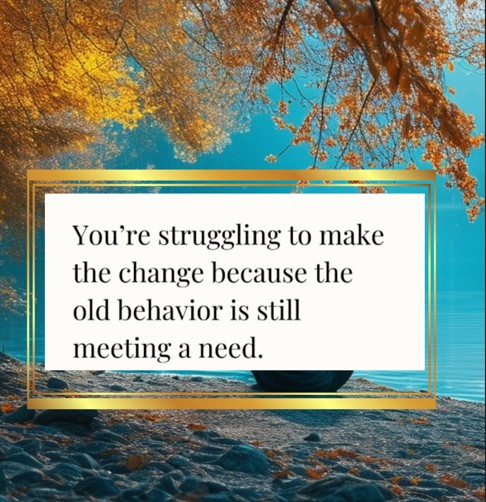
The Invisible Reward System That Keeps You Stuck
The brain isn’t interested in growth — it’s wired for survival.
Every time you repeat an old behavior, your brain receives a dopamine hit, reinforcing the pattern.



Your mind doesn’t sabotage you — it’s keeping you safe.
But here’s the problem:
What keeps you safe in the short term keeps you stuck in the long term.
To change, you don’t need to fight the old behavior — you need to reprogram the need that behavior is meeting.
The Subconscious Attachment to Safety – Why Letting Go Feels Like Losing Control
The Brain Prioritizes Safety Over Growth
The subconscious mind isn’t concerned with what’s best for you — it’s focused on what’s familiar.
When faced with change, your subconscious activates its protective mechanism:


Example:
- Overthinking? It gives you a sense of control when life feels unpredictable.
- Procrastination? It delays potential failure or judgment.
- Perfectionism? It guarantees approval, preventing rejection.
Until the subconscious feels safe with change, it will resist it.
How Trauma Hardwires Unhealthy Coping Mechanisms
Trauma Isn’t Just an Event – It’s a Program Running Your Subconscious
When you experience trauma, your brain encodes survival responses. These responses become default coping mechanisms, designed to protect you from further harm.



Trauma teaches the subconscious to equate safety with familiarity — even if familiarity is exhausting.
The 5 Emotional Needs That Old Behaviors Fulfill
Old patterns don’t just exist — they serve a purpose.
Here’s how unhealed emotional needs keep you locked in cycles of self-sabotage:
- Safety: Familiar behaviors feel predictable, even when they harm you.
- Connection: People-pleasing ensures you’re liked, even at the cost of your boundaries.
- Validation: Perfectionism provides external approval to soothe internal insecurity.
- Avoidance of Emotional Pain: Procrastination prevents facing unresolved emotions.
- Control: Overanalyzing gives a false sense of control when life feels chaotic.
To change, you must replace the old behavior with a new one that meets the same emotional need in a healthier way.
Why Willpower Alone Can’t Break the Cycle
Willpower Doesn’t Override the Subconscious
Willpower is a conscious effort, but your subconscious runs 95% of your daily behavior.
Why Willpower Fails:


To break free, you need to align your subconscious with your conscious desires.
The 3-Step Process to Break Free from Old Patterns
Step 1: Identify the Emotional Need Driving the Old Behavior
Ask yourself:

Example:
- Procrastination may protect you from fear of failure.
- Overeating may soothe emotional emptiness.
Step 2: Create a New Pattern That Meets the Same Need Safely
The mind resists letting go until it knows there’s a safer, healthier alternative.



Step 3: Reprogram the Subconscious to Accept the New Pattern
Hypnotherapy, NLP, and somatic reprogramming work directly with the subconscious, creating new default behaviors that feel safe.



Change Happens When Safety Meets New Patterns
You’re not stuck because you’re weak — you’re stuck because your mind is protecting you.
When you create safety around new behaviors, change happens effortlessly.
Change doesn’t happen by force — it happens by meeting the emotional need that keeps the old behavior alive.
